Animals
Resources to teach younger students about animals
curated by DIAGRAM Center
Resources 58
-
Animal Instincts
-
 Video
Video
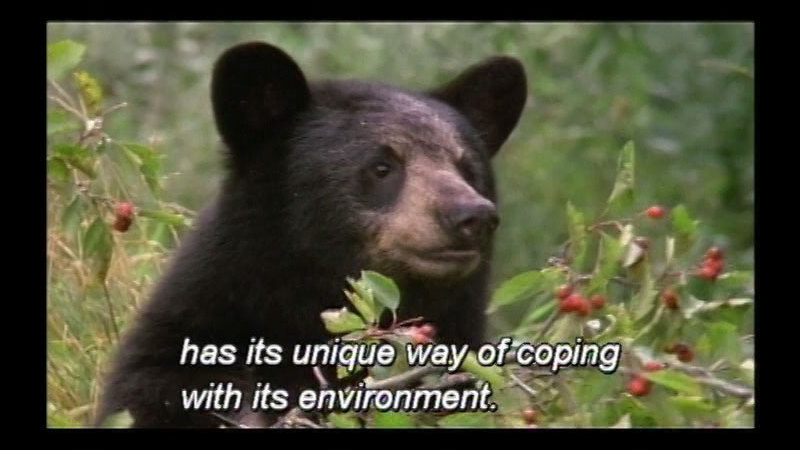
Looks at amazing instincts of three kinds of mammals: whales, bears and monkeys (primates). Segment 1, Marine Migration: Follows the humpback whales' migration through the waters between Maui and Alaska. Describes "bubblenetting", the whale's unique feeding behavior. Segment 2, Hibernation and Homing: Shows how bears' hibernation and homing instincts help them survive treacherous conditions. Segment 3, Parenting Primates: Visits the island of Borneo and shows how adult proboscis monkeys, macaques, and orangutans teach their young. Suggested classroom activities follow each segment.
(Source: DCMP)
-
-
Animals In Action
-
 Video
Video

How do biologists answer questions and solve problems? Within the context of answering this question, data collection, recording, and analysis are overviewed. Examines two animal behaviors: feeding and communication. Illustrates the different behaviors of lions, alligators, and chimpanzees, and then highlights the "waggle dance" used by bees. Supports the learning of these concepts in tandem with the textbooks also offered by the publisher.
(Source: DCMP)
-
-
Animals Of The Nile
-
 Video
Video
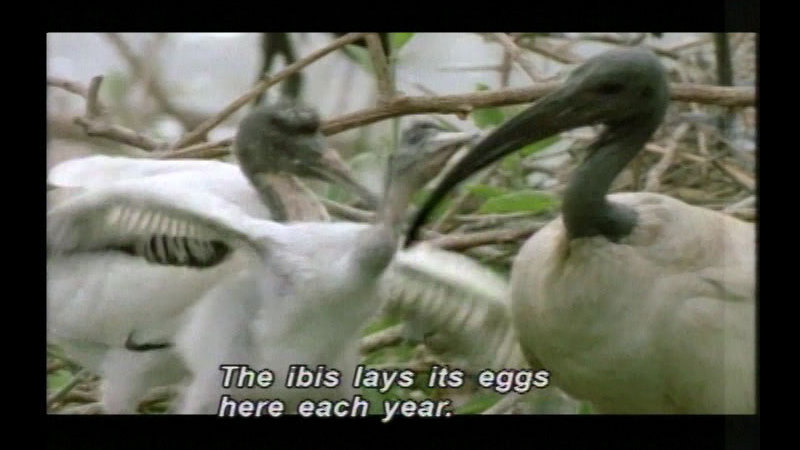
Observes the animals that make the Nile River their home, such as the baboon, spoonbill, crocodile, hippopotamus, African buffalo, elephant, cheetah, giraffe, lion, vulture, and ibis. Explores what they eat, where they find shelter, and how they live and play. Explains that they can only be found in remote places that are safe, where there is little contact with people, and where they can find food.
(Source: DCMP)
-
-
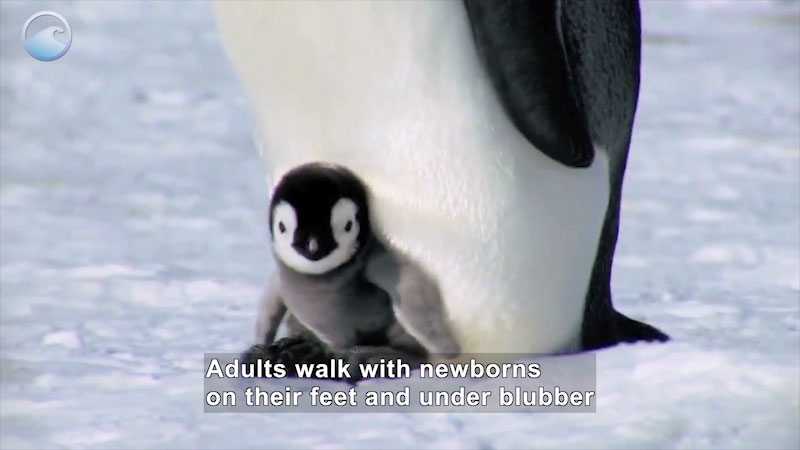
Their waddle has made them famous. These flightless marine birds have adapted well to the ice, snow, and frigid waters. Emperor penguins are the largest of all penguins, and they have several adaptations, which help them survive in cold environments.
(Source: DCMP)
-

New technologies and improvements in photography let us see into the private lives of insects and spiders. Shows both groups cleaning themselves, recycling, and building protective coverings. Comments on the two types of metamorphosis and observes some mating rituals.
(Source: DCMP)
-
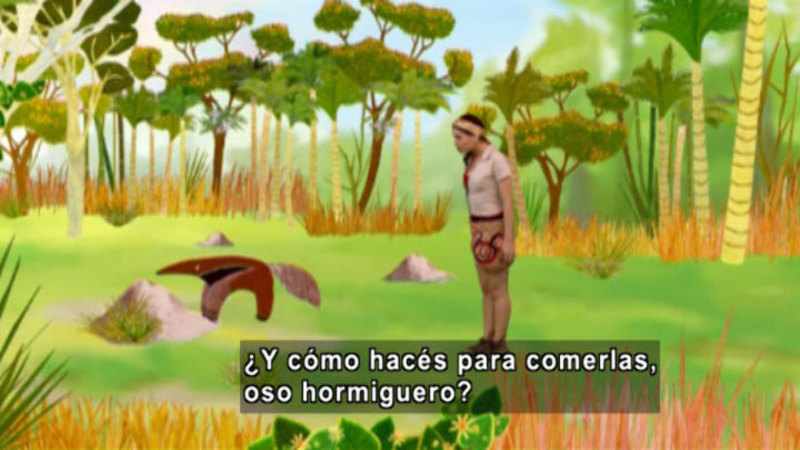
When Genoveva opens her magic book, the screen is filled with feathers, beaks, horns, legs, wings, and snouts. Genoveva's magic book transports her to various habitats where she learns about the animals that live there. In this episode, Genoveva visits the anteater and travels with the anteater in the woods looking for ant's nests.
(Source: DCMP)
-

When Genoveva opens her magic book, the screen is filled with feathers, beaks, horns, legs, wings, and snouts. Genoveva's magic book transports her to various habitats where she learns about the animals that live there. In this episode, Genoveva meets the ants.
(Source: DCMP)
-
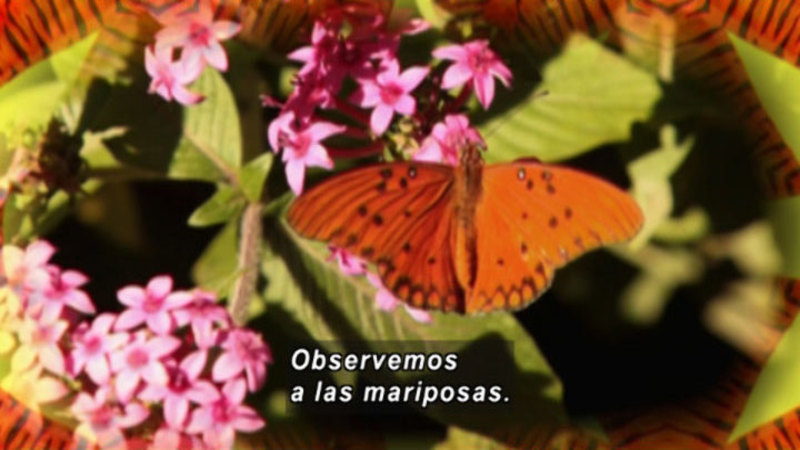
When Genoveva opens her magic book, the screen is filled with feathers, beaks, horns, legs, wings, and snouts. Genoveva's magic book transports her to various habitats where she learns about the animals that live there. In this episode, Genoveva explores the butterfly's world.
(Source: DCMP)
-
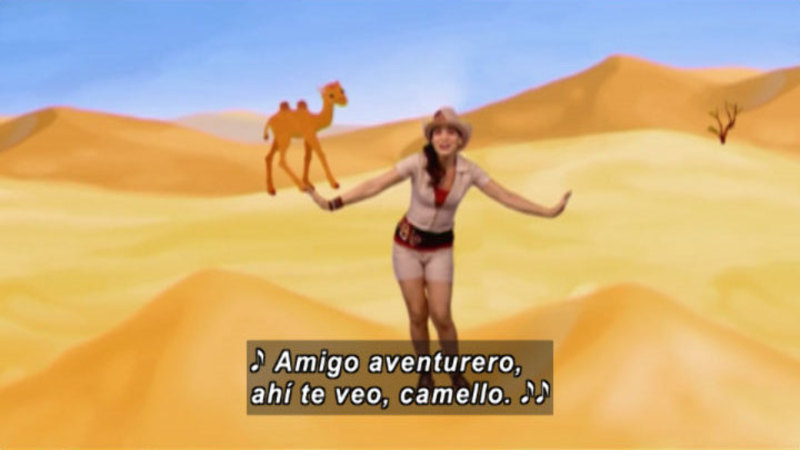
When Genoveva opens her magic book, the screen is filled with feathers, beaks, horns, legs, wings, and snouts. Genoveva's magic book transports her to various habitats where she learns about the animals that live there. In this episode, Genoveva watches as a pair of eyelashes and two large humps appear between the wind and the sand of the mysterious desert. Genoveva visits the world of camels.
(Source: DCMP)
-
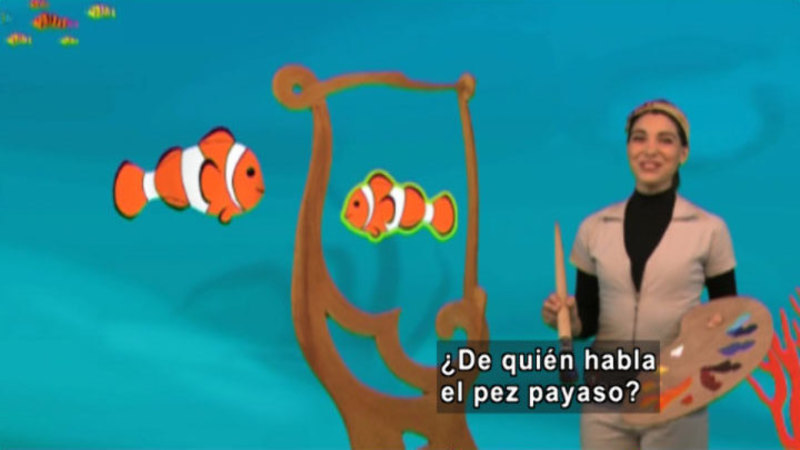
When Genoveva opens her magic book, the screen is filled with feathers, beaks, horns, legs, wings, and snouts. Genoveva's magic book transports her to various habitats where she learns about the animals that live there. In this episode, Genoveva visits the warm waters where the clownfish lives.
(Source: DCMP)
-
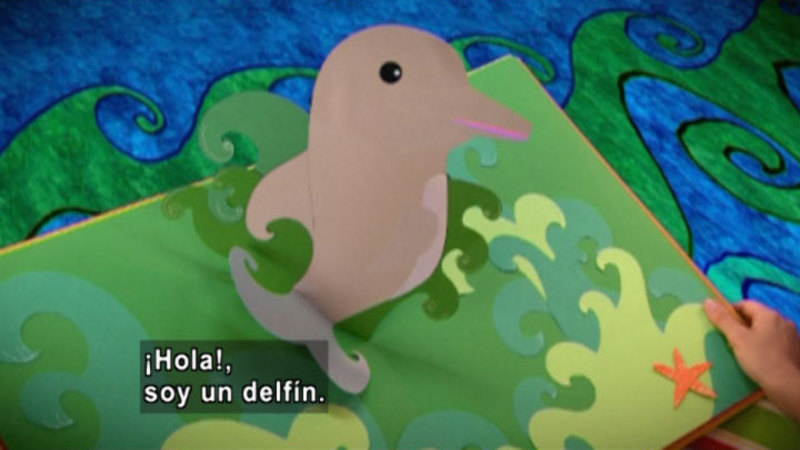
When Genoveva opens her magic book, the screen is filled with feathers, beaks, horns, legs, wings, and snouts. Genoveva's magic book transports her to various habitats where she learns about the animals that live there. In this episode, Genoveva visits with one of the most intelligent animals: the dolphin.
(Source: DCMP)
-
Animapaka: Fox (Spanish)
-
 Video
Video
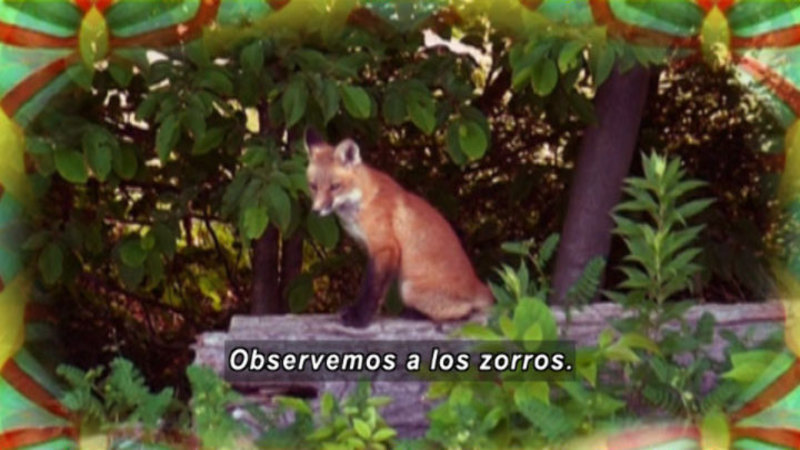
When Genoveva opens her magic book, the screen is filled with feathers, beaks, horns, legs, wings, and snouts. Genoveva's magic book transports her to various habitats where she learns about the animals that live there. In this episode, the magic book of animals takes Genoveva to the world of foxes.
(Source: DCMP)
-
-
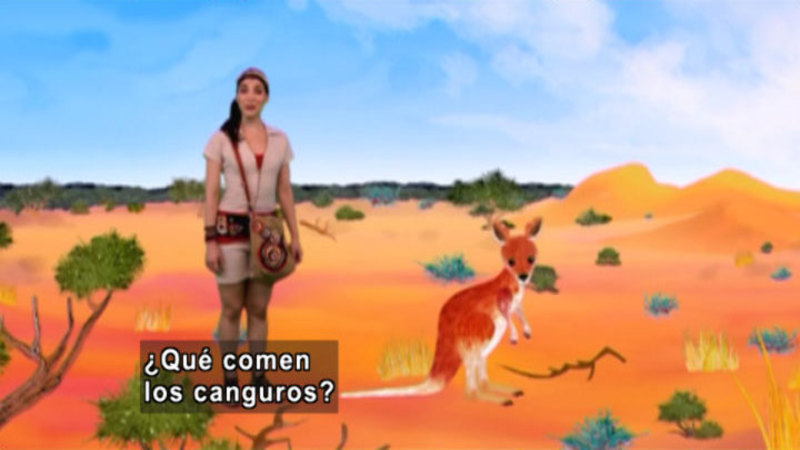
When Genoveva opens her magic book, the screen is filled with feathers, beaks, horns, legs, wings, and snouts. Genoveva's magic book transports her to various habitats where she learns about the animals that live there. In this episode, Genoveva and her magic book travel to the Australian desert to go jumping with the kangaroos.
(Source: DCMP)
-
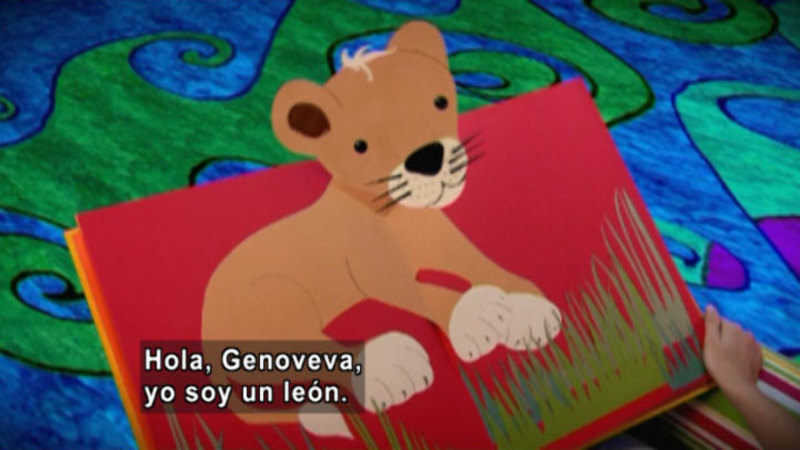
When Genoveva opens her magic book, the screen is filled with feathers, beaks, horns, legs, wings, and snouts. Genoveva's magic book transports her to various habitats where she learns about the animals that live there. In this episode, Genoveva takes a crouching walk under the sun with the lions.
(Source: DCMP)
-
Ant Homes & Communities
-
 Video
Video
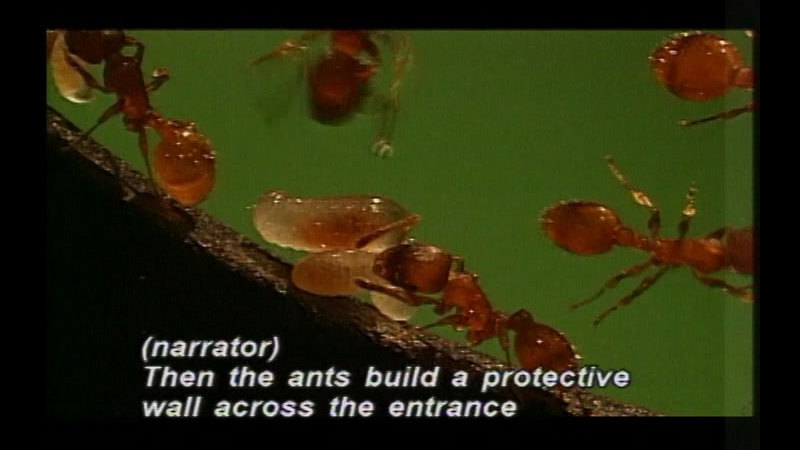
Looks at several types of ant species and explains their differences in building houses. Discusses why ant house building is dependent on teamwork. Observes ants building colonies and explores the jobs of different ants in a community. Outlines the life stages of ants. Describes how the lives of ants differ according to the sex of an ant. Explains how ants use the sense of smell to communicate.
(Source: DCMP)
-
-
Ant Bodies
-
 Video
Video
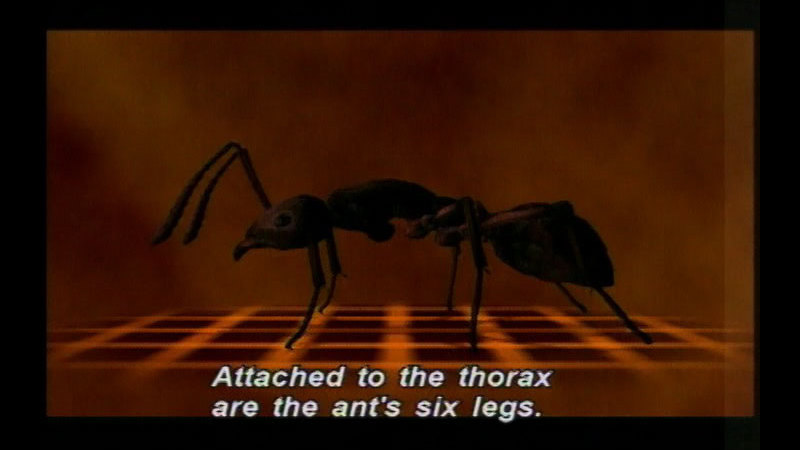
Talks about ant anatomy. Explains that not all species look alike, but they all share the same basic characteristic of having three functional body segments: head, thorax, abdomen. Describes body parts and functions of each segment. Discusses how various species of ants from Africa, South America, and Australia have adapted to their surroundings over time.
(Source: DCMP)
-
-
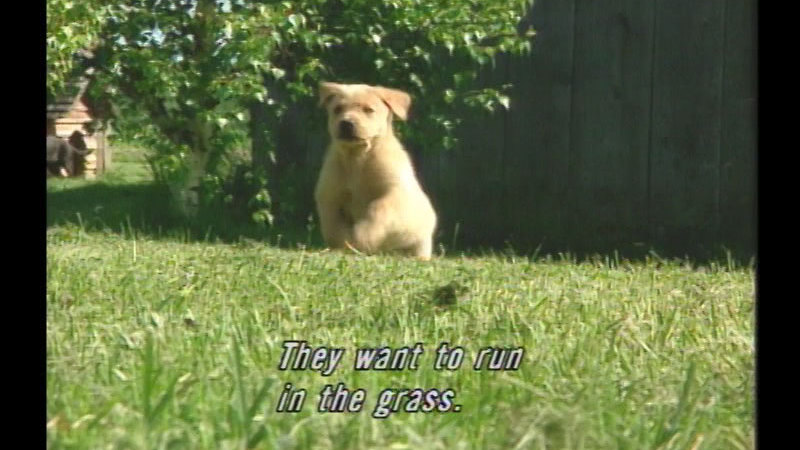
A teddy bear and toy bunny serve as guides on a trip to a farm. They see and comment on a variety of baby farm animals: piglets, kittens, rabbits, calves, puppies, colts, ducklings, chicks, lambs, fawns, and kids. They also see a beekeeper fumigating a beehive with smoke in order to harvest the honey.
(Source: DCMP)
-
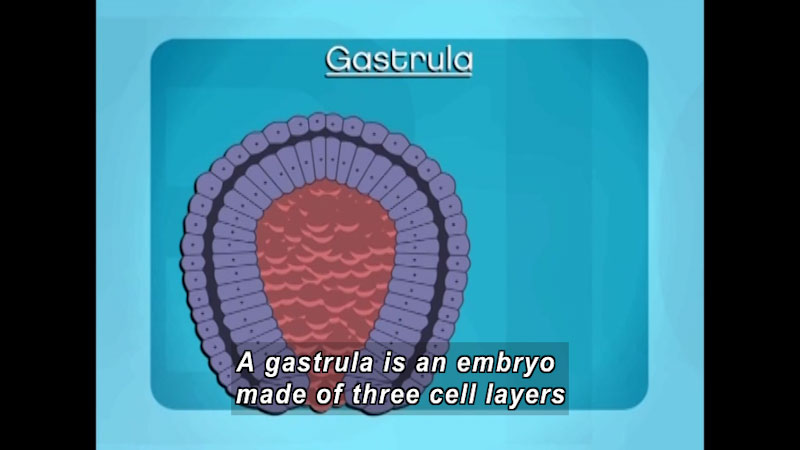
This video outlines the complementary nature between structure and function. Students will observe specific animals that have structures geared towards a particular function. Topics covered include the structures and processes animals use involved in breathing, eating, passing waste, and moving. Part of the "Biology" series.
(Source: DCMP)
-
Aquarist: Feeding Time
-
 Video
Video
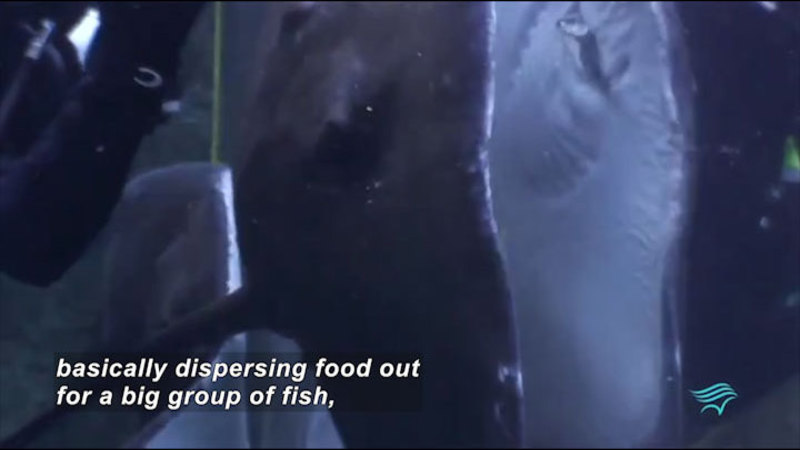
What’s on the menu? Find out how aquarists feed some of the largest and smallest aquarium animals under their care. Understanding marine food webs, animal behavior, and nutrition are important skills needed for this science-based career. Part of the "Aquarist" series.
(Source: DCMP)
-
-
Arthropods
-
 Video
Video

Arthropods have jointed limbs, hard exoskeletons, segmented bodies, and molt--or shed--their shells in order to grow. Crabs, beetles, centipedes, squillas, pill bugs, and walking sticks demonstrate a variety of ways some of the one million different species of arthropods walk.
(Source: DCMP)
-
-
Bengal Tigers
-
 Video
Video
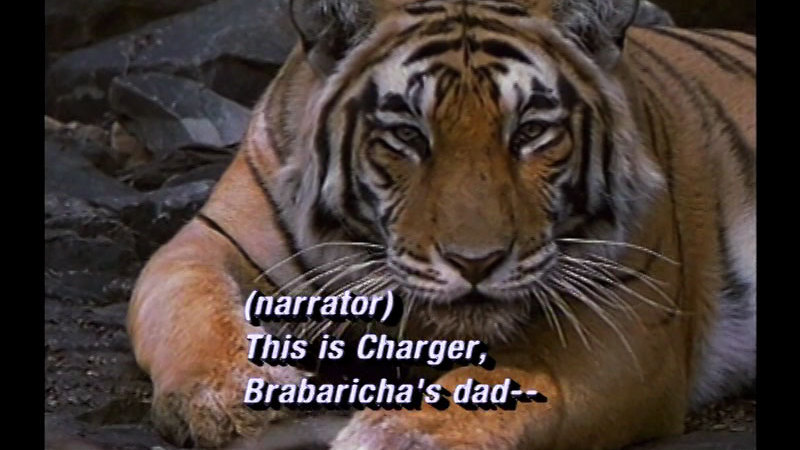
Anthony Marr champions the cause of the endangered Bengal tiger, focusing on 40 tigers at an Indian national park. From 100,000 animals in 1900 to less than 5,000 today, the tigers face extinction from lack of space, poachers, desire for folk medicine, apathy, and ignorance. Shows tigers hunting, eating, resting, and with new cubs. Photography supports facts about this most exotic and revered predator. NOTE: One brief mating scene.
(Source: DCMP)
-
-
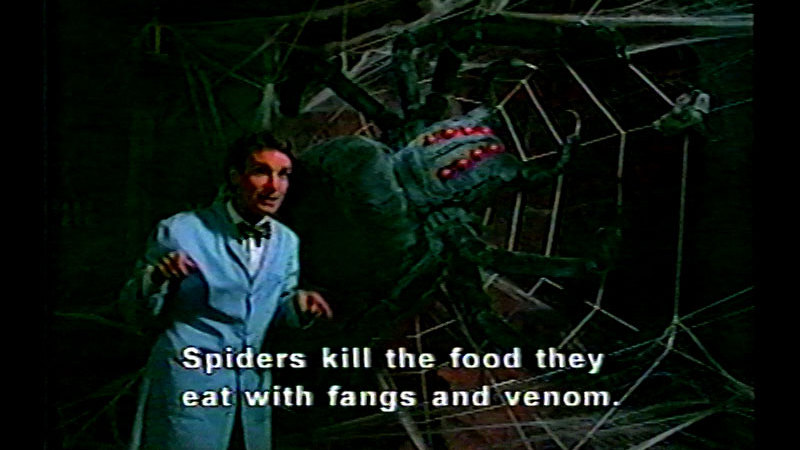
Bill Nye describes a spider's body structure, tells how it differs from insects, demonstrates how spiders use their silk (the strongest natural fiber in the world), and stresses their importance in nature. Closeups of webs.
(Source: DCMP)
-
Bioluminescence
-
 Video
Video
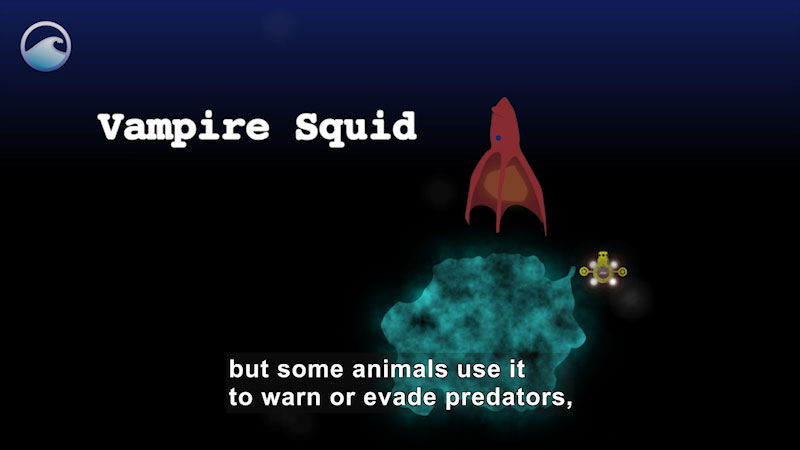
Bioluminescence is a chemical process that allows living things to produce light. On land, fireflies are one of the most visible users of bioluminescence. In the ocean, bioluminescent creatures can be found from the surface all the way down to the deep sea floor. Scientists are still trying to figure out why and how animals adapted this feature.
(Source: DCMP)
-
-
Bird Basics
-
 Video
Video
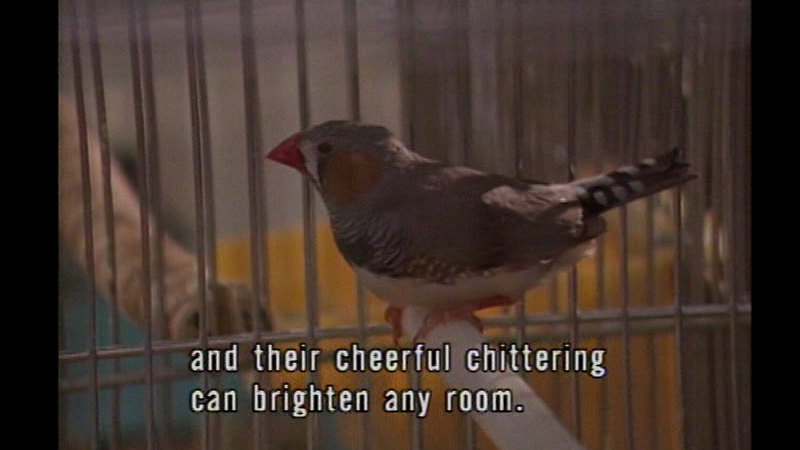
Marli Lintner, an avian veterinarian, shares her expertise on choosing a pet bird, common species, bringing a bird home, proper housing, nutrition and diet, health matters, trimming wings and nails, and taming a bird.
(Source: DCMP)
-
-
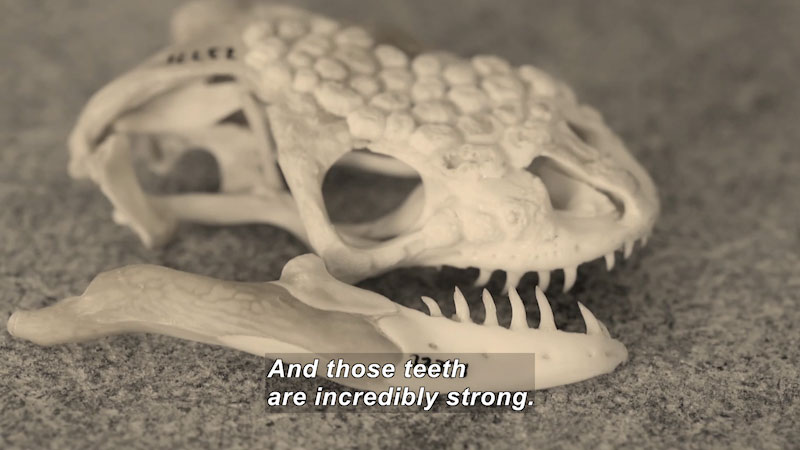
Venomous animals have evolved a variety of mechanisms that deliver toxins to would-be predators and prey. Curator Mark Siddall discusses some of the anatomical features these venomous animals have adapted.
(Source: DCMP)
-
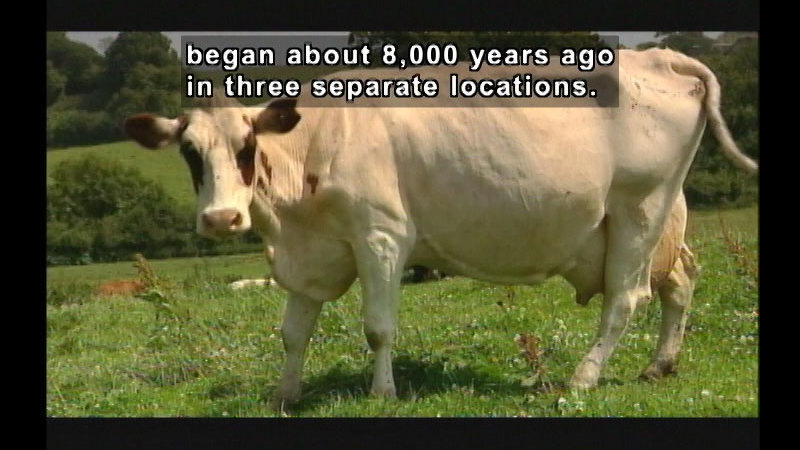
Investigates the reasons why cattle and humans have been linked together for over 30,000 years. Analyzes the anatomy of the cow's stomach, detailing the purpose of each chamber. Visit the Masai with their cattle herds and the sacred cows of India. Introduces the main cattle breed of the 800 breeds developed in England, explaining how artificial selection is used to produce desirable characteristics. Also introduces British dairy cow detailing the working of the udder and teats and the use of genetic engineering to increase milk production. Interviews Eric Schlosser, an author about the development of slaughterhouse methods in America. Also visits a family ranch where cattle are being raised in natural conditions under a grass management system.
(Source: DCMP)
-
Classifying Animals
-
 Video
Video
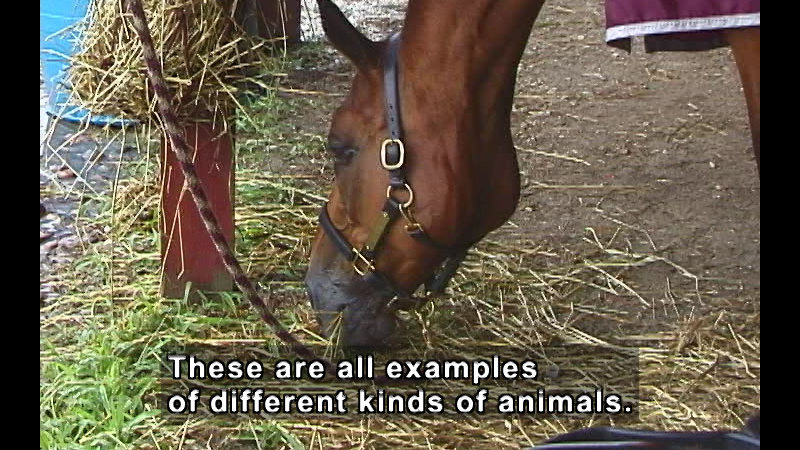
Explores the fascinating features of the animal kingdom. The taxonomy of the different invertebrate and vertebrate phyla are the focus of the program, with special emphasis placed on the evolutionary relationships of the various phyla. Each of the major phyla are discussed, going from simple to more complex organisms. Other terminology includes: sponges, cnidarians, flatworms, roundworms, segmented worms, mollusks, arthropods, echinoderms, fishes, amphibians, reptiles, birds, and mammals.
(Source: DCMP)
-
-
Complex Animals
-
 Video
Video
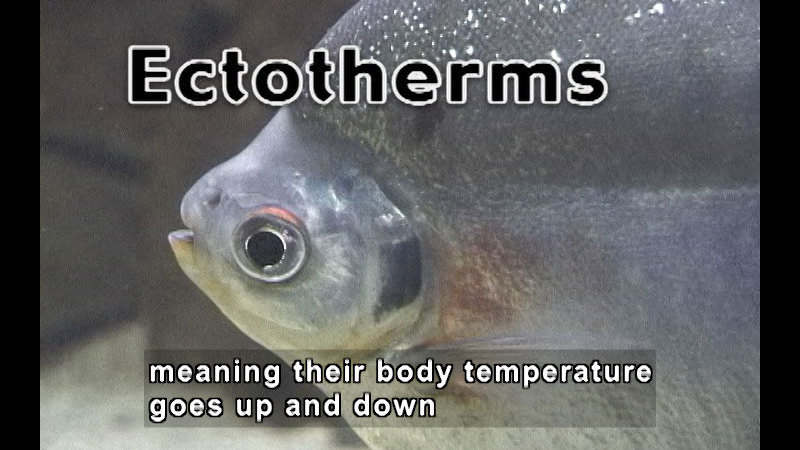
There are millions of different types of animals on Earth, ranging from simple animals, such as sponges and worms, to more complex animals. Students focus on complex animals, specifically the major vertebrate groups: fishes, amphibians, reptiles, birds, and mammals. Specific examples of vertebrates are shown to illustrate the different characteristics of complex animals. Important terminology includes: vertebrae, backbone, gills, ectoderm, fins, metamorphosis, eggs, scales, feathers, and endotherm.
(Source: DCMP)
-
-
Classification Systems
-
 Video
Video
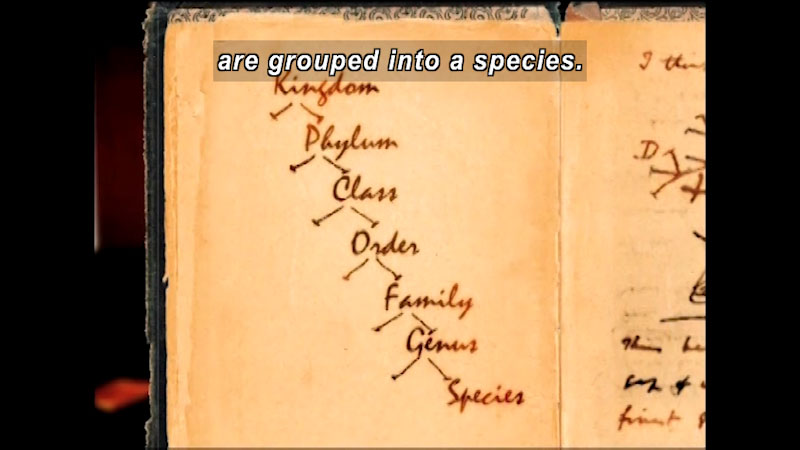
Research in biology would be impossible without a common framework for grouping and distinguishing species. Carl Linnaeus was the first to propose a classification system of organisms. His system developed into the organizational structure used in the life sciences today. Viewers also learn how new scientific names are created and how the existing system has been further refined using DNA studies.
(Source: DCMP)
-
-
Costa Rican Monkeys
-
 Video
Video
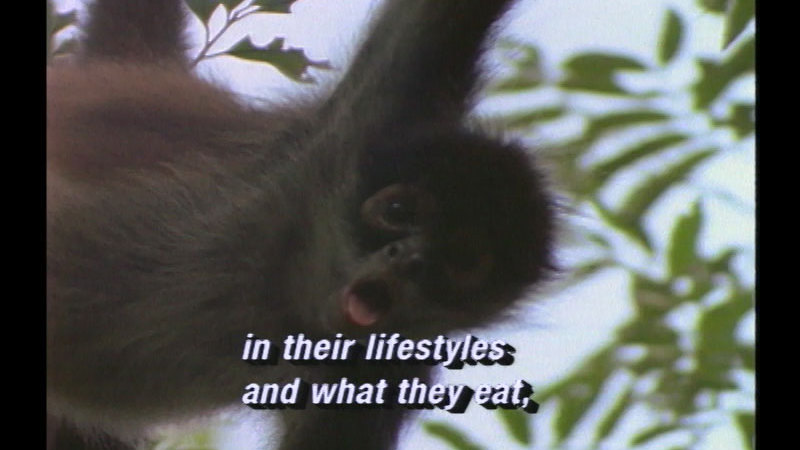
One-third of Costa Rica's land is designated as national parks. One park is home to the capuchin, howler, and spider monkeys, each an endangered species. The three groups have distinct similarities and differences in their habitats, diets, characteristics, and social structures. As scientists study the roles and functions of the female monkeys, they remain fascinated by these animals that are so similar to humans. NOTE: One brief mating scene.
(Source: DCMP)
-
-
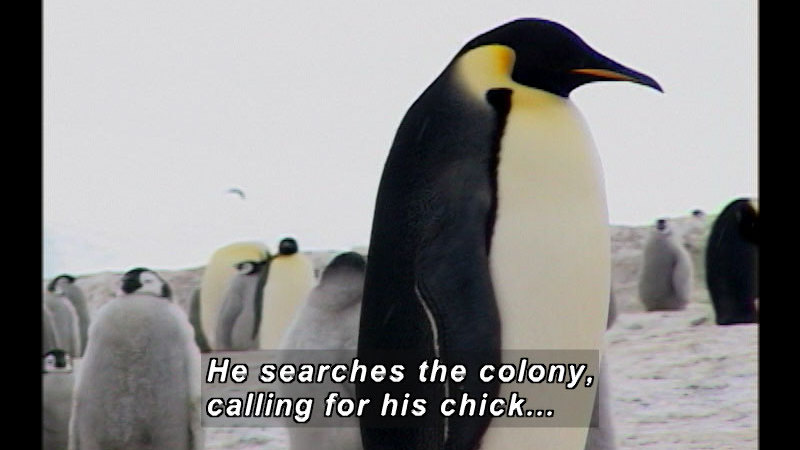
What do wild animals do when we're not around? Find out with National Geographic's Crittercam. Safely worn by wildlife, Crittercams capture video, sound, and other information, giving students rare views of the private lives of animals. Crittercams help to solve scientific mysteries by providing an animal's eye view. And what scientists learn from Crittercams helps them protect the very animals that wear them. Join the Crittercam team in Cape Washington as they deploy special cameras to reveal how emperor penguins travel vast distances to feed -- and then run a dangerous gauntlet back to their chicks.
(Source: DCMP)
-
Dairy
-
 Video
Video
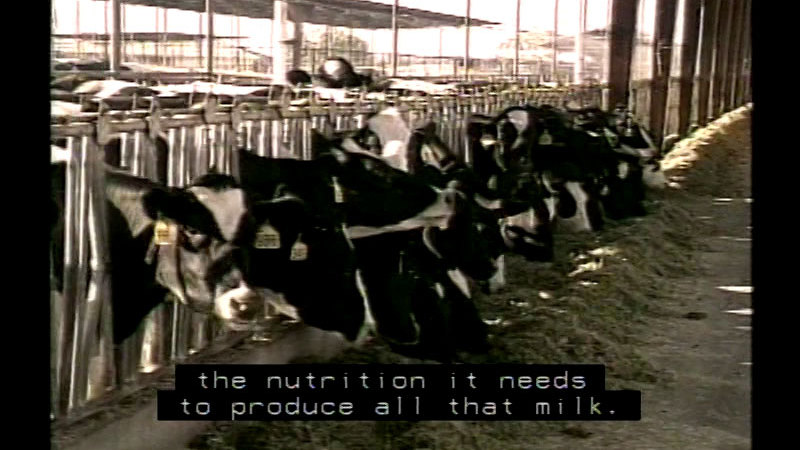
One of the fifteen parts of the "Farm to Market" series. Begins with a trip to the dairy farm to see how cows are cared for and fed. Demonstrates how the cows are milked by machine and how the milk is processed and transported. Also shows how milk is made into cheese and butter.
(Source: DCMP)
-
-
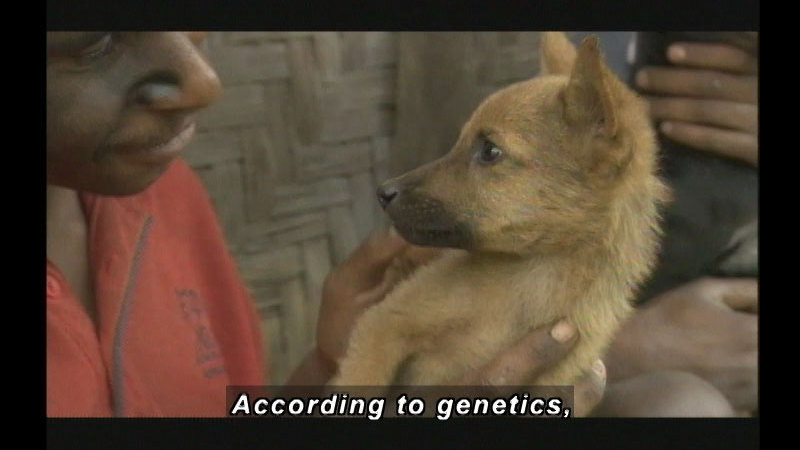
New scientific evidence suggests that some wolves evolved into dogs by domesticating themselves, and not by humans taming them. Features evidence that dogs have traveled and been buried with humans since prehistory, adapting to every climate and evolving into many subspecies or types of the same dog species. Human cultures might not have evolved as they did without the help of the dog, our most cherished and probably first domestic animal companion.
(Source: DCMP)
-
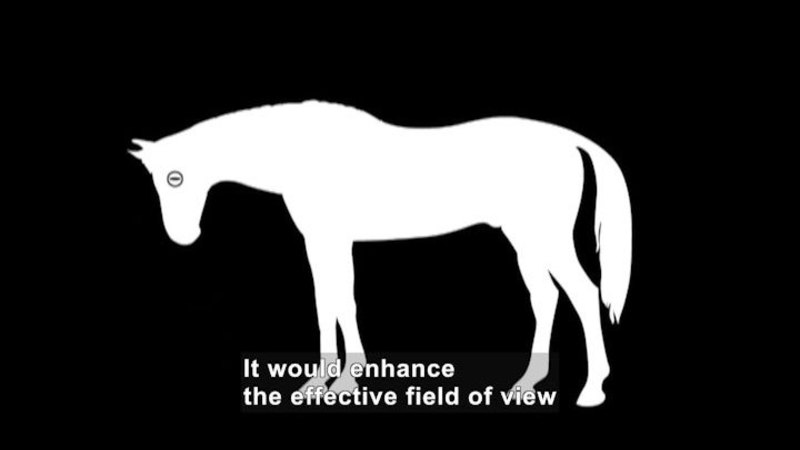
New research led by scientists at the University of California, Berkeley, suggests that the shape of some animals' pupils could reveal whether one is hunter or hunted. An analysis of 214 species of land animals shows that a creature's ecological niche is a strong predictor of pupil shape. Species with pupils that are vertical slits are more likely to be ambush predators that are active both day and night. In contrast, those with horizontally elongated pupils are extremely likely to be plant-eating prey species with eyes on the sides of their heads.
(Source: DCMP)
-
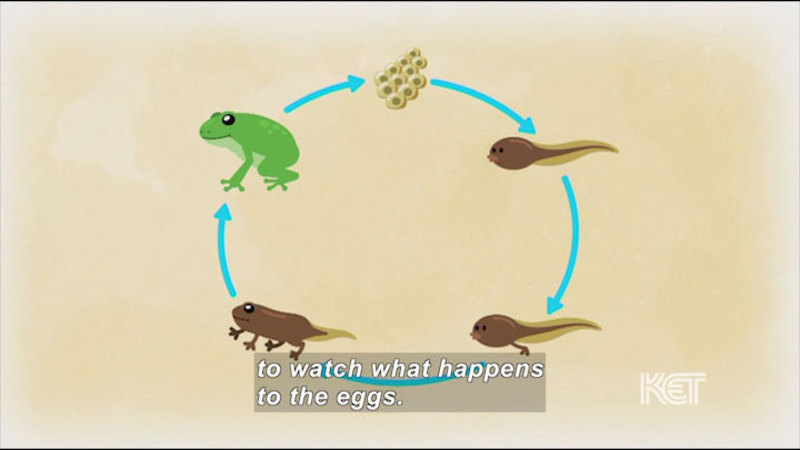
Many animals look like tiny versions of their parents when they are born, but not frogs. Follow the narrator and her grandpa as they observe the events leading up to their amphibian friend becoming a frog. Part of the "Everyday Science for Preschoolers" series.
(Source: DCMP)
-
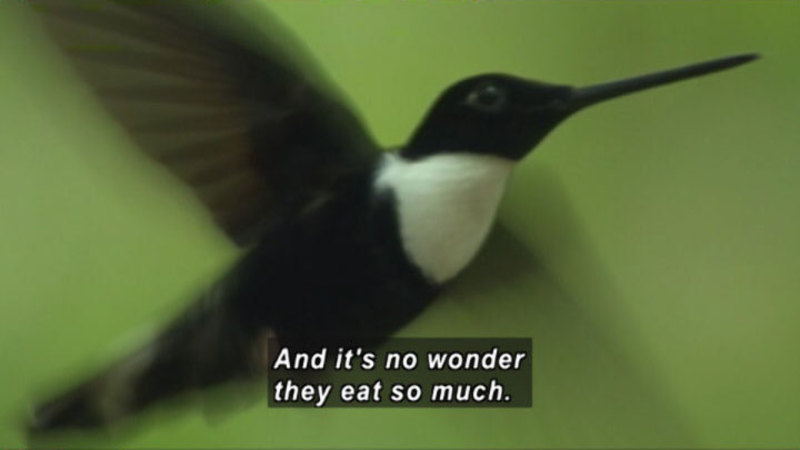
Hummingbirds live only in the Americas, and their diversity numbers 350 species. They are part-time carnivores that must catch animals that compromise ¼ of their diet. Demonstrates how they can hover, fly backward, and move their wings in figure eights at 200 wind-beats per second in slow and stop motion images. Also reveals that every night their bodies go in torpor (mini-hibernation) so they don't starve while they can't consume nectar. Also sees how they co-evolve with flowers through pollinating mutualisms, and acquired their aerial skills by evolving from ancestors of swifts, their nearest relatives.
(Source: DCMP)
-
It's A Dog's Day
-
 Video
Video
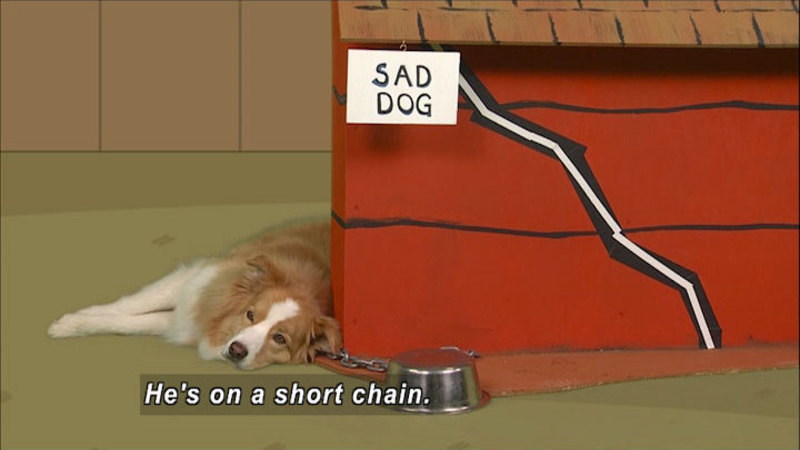
The Palo Alto Humane Society tells the story of a compassionate and caring community that rides to the rescue of a sad and lonely dog. The story is told through a unique collaboration of art forms and artists, combining puppet artistry, circus art, mime, and dogs trained in theater performance. Puppets give voice to the story, while professional circus artists and their dogs enact the plot of caring, rescue, and love.
(Source: DCMP)
-
-
It's Cool To Be Kind
-
 Video
Video
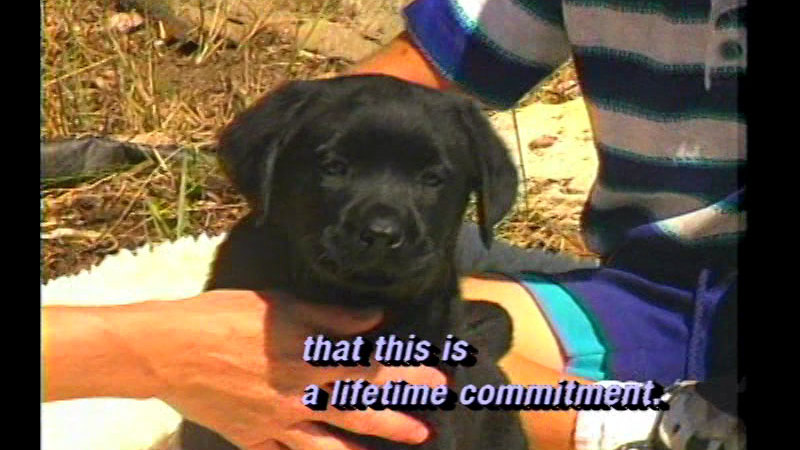
Where can I get a pet? What kind should I choose? How do I care for my pet? Covers how to keep a pet healthy and safe, animal shelters, adopting a pet, veterinary care, grooming, and pet emergencies. Encourages respect for animals, and discusses the link between animal cruelty and violence against humans.
(Source: DCMP)
-
-
Kittens To Cats
-
 Video
Video
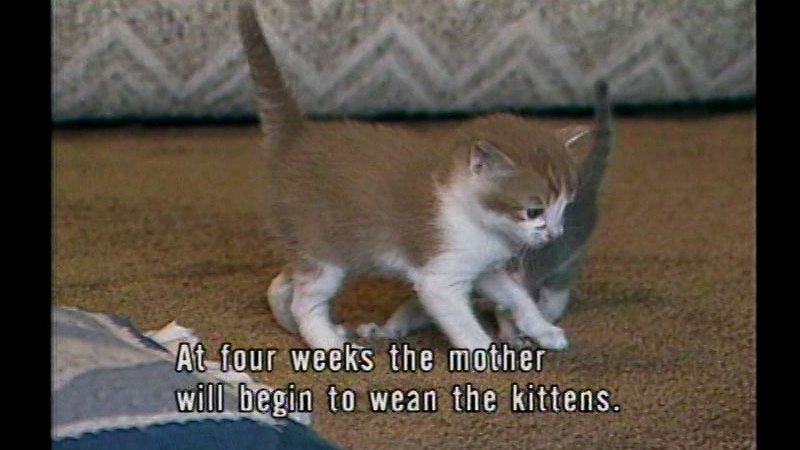
Ann Childers, an animal behaviorist, shares her knowledge of cat development, diet, grooming, common behavior problems, training and exercising, and health. She also discusses special concerns for working owners, coping with grief following the death of a pet, and reactions (allergic, fearful) that visitors may have and how to deal with these.
(Source: DCMP)
-
-
Kids Discover Bats!
-
 Video
Video
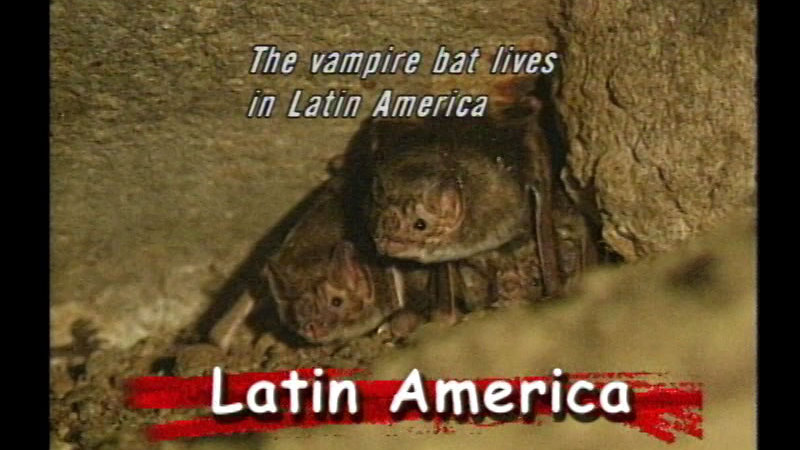
What do you know about bats? Are they our friends or enemies? Emphasizes that bats help us with pollination, seed dispersal, and by eating millions of bugs. Discusses their habitats and the foods they eat. Shows that their appearance and size differ. Closes with a warning that bats are wild animals.
(Source: DCMP)
-
-

Usumane tells the villagers about the lifeforms that make up the natural world around them. From the Kool Books series narrated by Hector Bonilla.
(Source: DCMP)
-

This is a story about how life began on earth. What was the first living creature, and how did it adapt to the environment? From the Kool Books series narrated by Hector Bonilla.
(Source: DCMP)
-
Mammals, Revised
-
 Video
Video
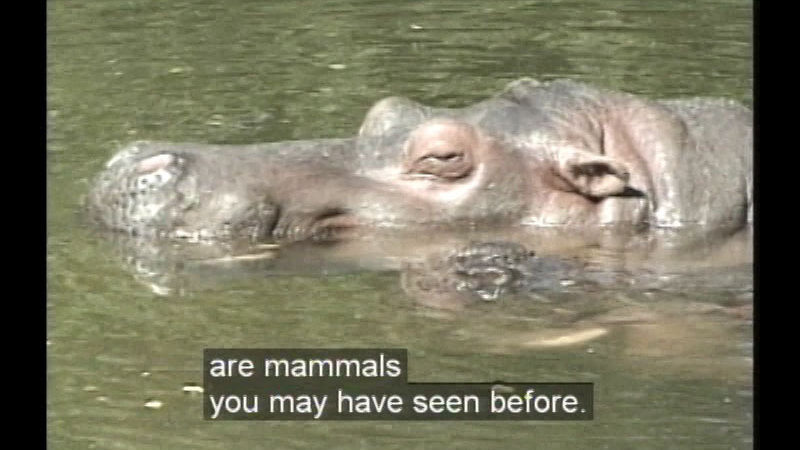
Highlights the main characteristics of mammals through song, narration, and film. Notes most mammals live on land, and shows ways mammals move and protect themselves. Labels key features.
(Source: DCMP)
-
-
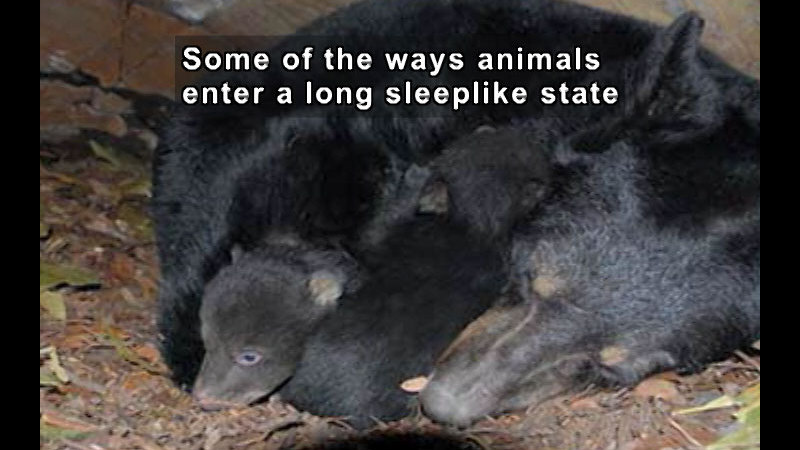
Geese flying south is a sign that winter is arriving. Through numerous examples, this program illustrates the migration of animals. Also explored is the amazing process of hibernation.
(Source: DCMP)
-
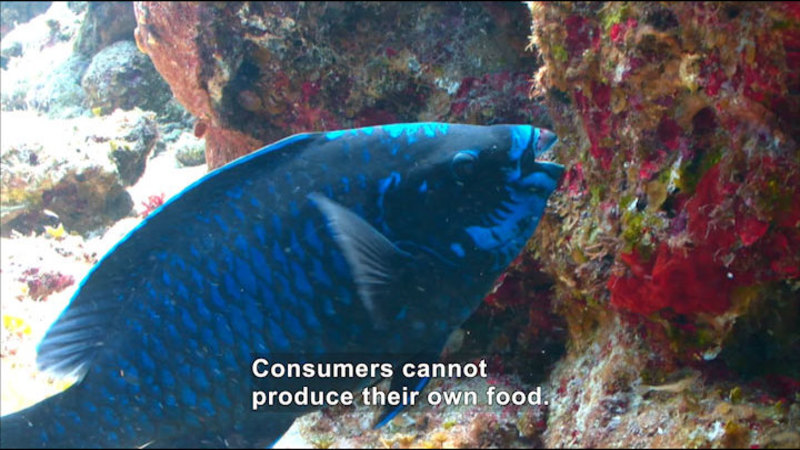
Students will explore the relationship between plants and animals and the role they play in the food chain. Students will also learn that food chains represent the continuous exchange of energy among organisms. Part of the Real World Science series.
(Source: DCMP)
-
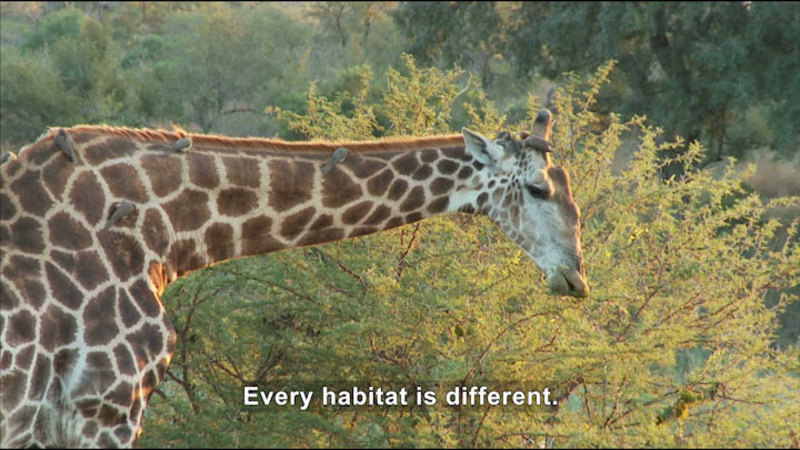
Why are habitats important? Students journey around the globe to explore the tundra, deserts, grasslands, forests, and waterways and learn about the plants and animals that live there. Part of the Real World Science series.
(Source: DCMP)
-
Single-Celled Organisms
-
 Video
Video

They're neither plants nor animals, yet they are some of the most important life-forms on Earth. This video segment explores the world of single-celled organisms: what they eat, how they move, what they have in common, and what distinguishes them from one another.
(Source: DCMP)
-
-
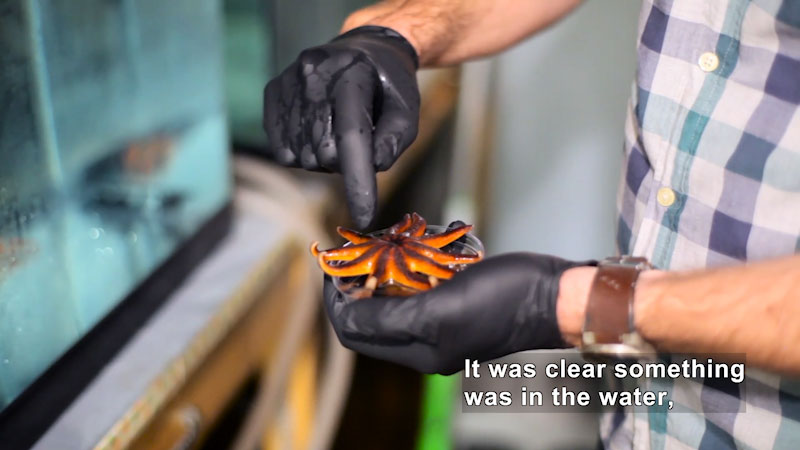
Sea star wasting syndrome is the largest marine disease event ever seen. Microbiologist Ian Hewson shares what inspires him to study oceanic ecosystems, and how scientists from Cornell University are solving this ecological mystery.
(Source: DCMP)
-
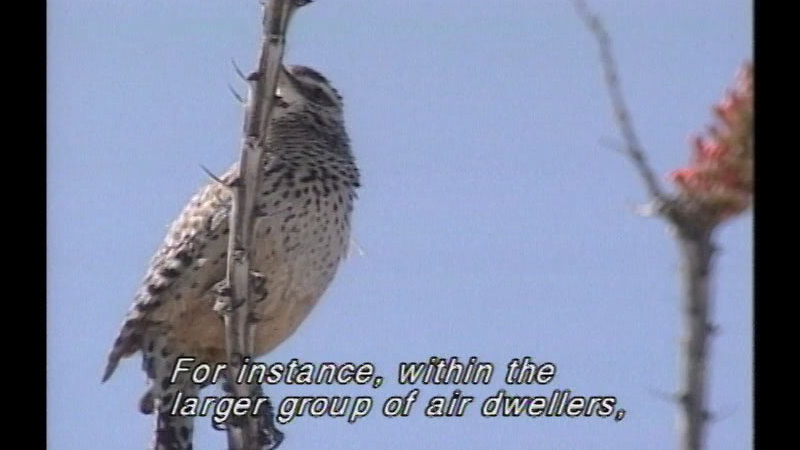
A taxonomist explains the current classification system for all living things. Beginning with Aristotle's two kingdom division, today there are five kingdoms, with talk of changing to six. Uses the product groupings in a grocery store to clarify the concept. Looks at the differences of each kingdom: Monera, Protista, Fungi, Plantae, and Animalia. Stresses that the more we learn, the more likely this system will change yet again.
(Source: DCMP)
-
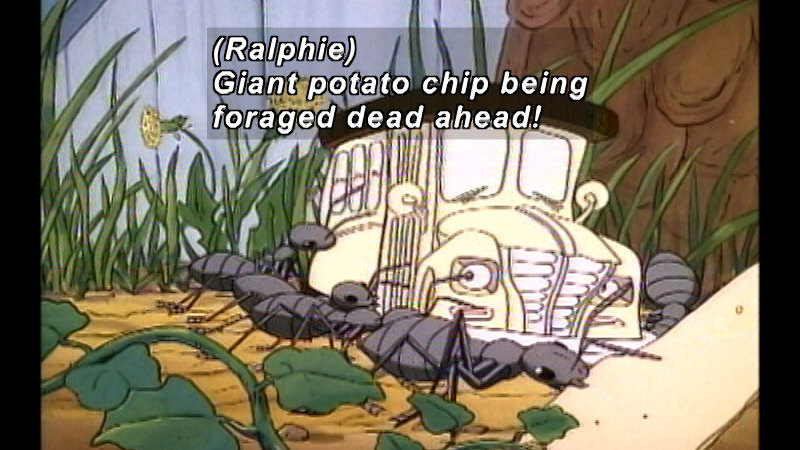
The Magic School Bus is an award winning animated children’s television series based on the book series of the same title by Joanna Cole and Bruce Degen. It is notable for its use of celebrity talent and being both highly entertaining and educational. The class visits the inside of an anthill when Keesha directs a movie about social animals for the school science fair. Watching the ants at close range, the class realizes how social the ants are and how each one performs a vital job for the survival of its colony.
(Source: DCMP)
-
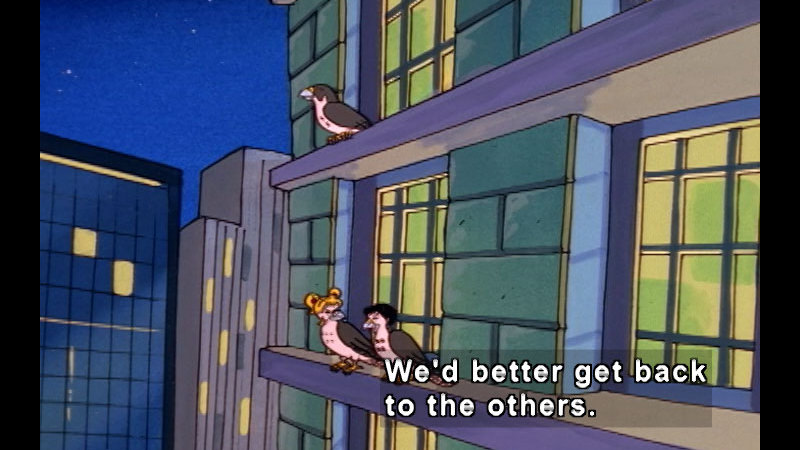
The Magic School Bus is an award winning animated children’s television series based on the book series of the same title by Joanna Cole and Bruce Degen. It is notable for its use of celebrity talent and being both highly entertaining and educational. Ms. Frizzle's class is visiting the zoo, which is, according to Tim, the only place in the city where wild animals can survive. To test this idea, Ms. Frizzle turns the class into possums, foxes, and falcons. The kids explore the city as animals and see how wildlife can live in the city.
(Source: DCMP)
-
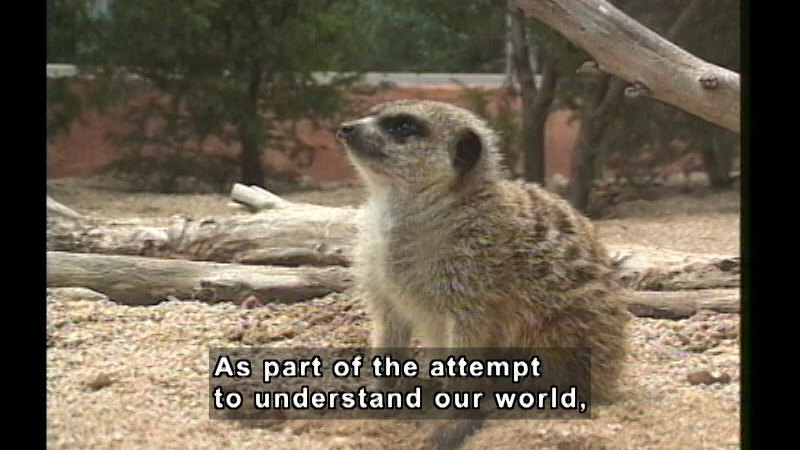
Presents a brief history of what new information caused the classification of living things to evolve from the original two kingdom classification of animals and plants by Linnaeus in the 18th century to the present-day six kingdoms: Animal, Plant, Fungi, Protista, Eubacteria, and Archaebacteria. Discusses three of the six kingdoms: Animals, Plants, and Fungi.
(Source: DCMP)
-
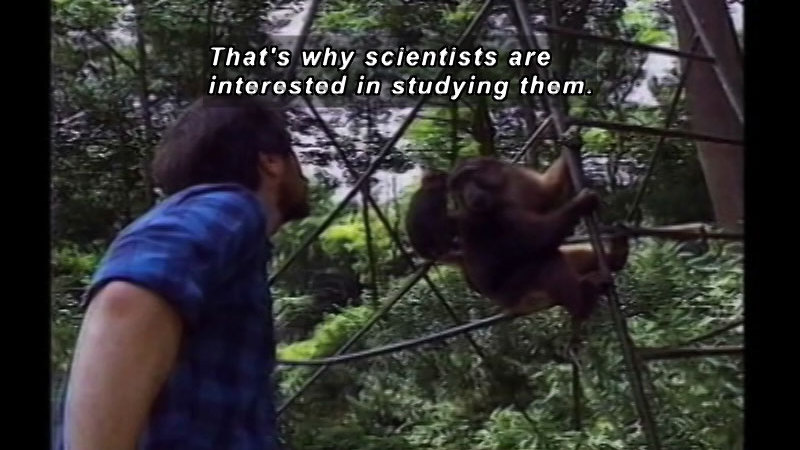
Part of "Show Me Science" series. Are animals intelligent? Bees communicate with each other. Monkeys use rocks and sticks to help them get food. Is this instinctual or is it evidence of thought? Some scientists believe that one measure of intelligence is self-awareness, and that an animal's reaction to its own image in a mirror can tell us whether or not it is self-aware. Looks at fish, birds, monkeys, and primates and their reactions to themselves in a mirror. Researchers look for signs of self-recognition as they observe, record, and interpret the reactions of these animals. Includes suggestions for careers in this field of study.
(Source: DCMP)
-
Vertebrates
-
 Video
Video
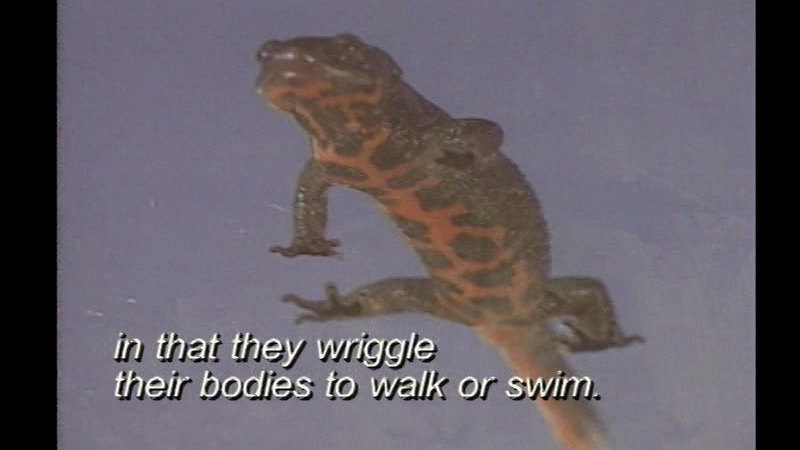
Vertebrates use their backbones to move in a variety of ways. Observes and comments on the movement of fish, moray eels, newts, salmon, cheetahs, dolphins, birds, and babies. Highlights the differences and similarities of their movement. Motorized models reveal precisely how some animals' backbones move.
(Source: DCMP)
-
-
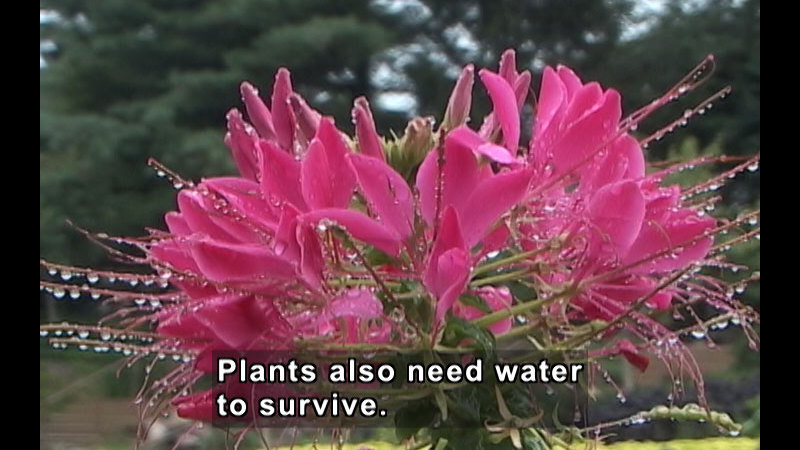
All living things have basic needs that must be met in order to survive. This easy-to-understand program addresses the basic needs of organisms. By considering specific plants and animals, the viewer sees how living things need food, water, air and a place to live.
(Source: DCMP)
-

A nose for digging? Ears for seeing? Eyes that squirt blood? Explore the many amazing things animals can do with their ears, eyes, mouths, noses, feet, and tails. Based on the children's book by Robin Page.
(Source: DCMP)
-
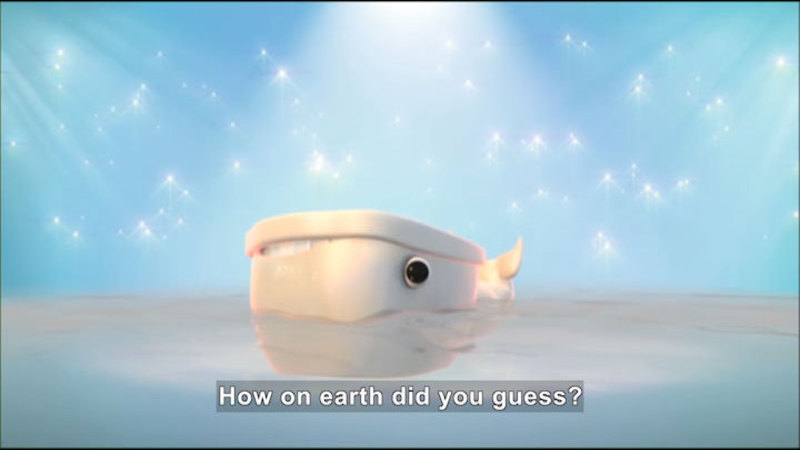
In each episode, viewers are given clues about a hidden animal inside a magic box. This episode is all about animals that swim. Highlighted animals include: a whale, a crocodile, a dolphin, a frog, a sea horse, a jelly fish, a penguin, a gold fish, a shark, and a turtle. Part of the "Zoobabu" series.
(Source: DCMP)
-
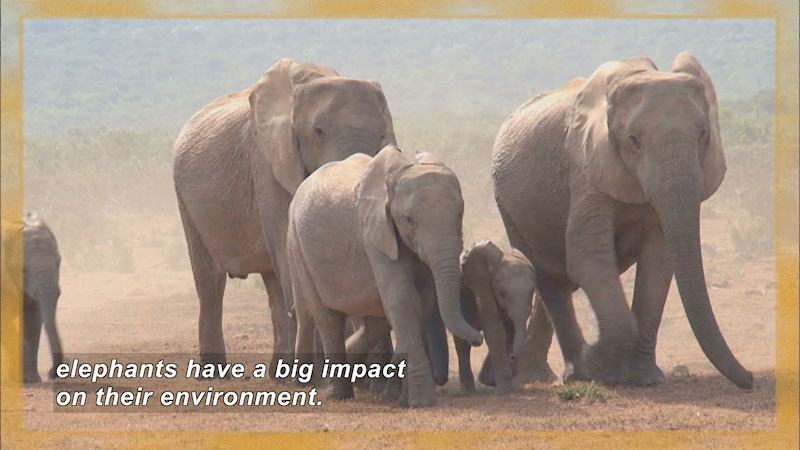
Students learn about the differences between Asian and African elephants and how elephants make a dramatic impact on their ecosystems. After learning about elephants as "landscape architects," students apply the inquiry process to investigate the different tasks of elephants' trunks. Part of the "You at the Zoo" series.
(Source: DCMP)
